Research on the Error Compensation for the Dynamic Detection of the Starting Torque of Self-Lubricating Spherical Plain Bearings
Abstract
1. Introduction
2. Experimental Apparatus and Dynamic Detection of the Starting Torque
2.1. Experimental Apparatus
2.2. Dynamic Detection of the Starting Torque
3. Dynamics Simulation of the Swing System
3.1. Simulation Model
3.2. The Analysis of Simulation Results
4. Dynamic Detection Error Compensation
4.1. Modeling of the Inertia Torque
4.2. The Modeling and Strategy for the Error Compensation
- Td—dynamic starting torque of the bearing (N∙m);
- Tc—torque measured by the torque sensor (N∙m).
5. Test
5.1. Detection System of the Tester
5.2. Dynamic Detection of the Starting Torque After Error Compensation
6. Conclusions
- (1)
- During the dynamic detection of the starting torque of the SSPBs, the torque detected by the torque sensor not only includes the starting torque of the bearing, but also the inertia torque of the swing system. As the swing frequency of the swing system increases, the inertia torque increases, and the dynamic detection accuracy of the starting torque of the bearing is reduced.
- (2)
- The relative error between the test values and the simulation values of the starting torque of the bearing is 17.5%, which indicates that its change tendency can be intuitively reflected by the established dynamic simulation model. The relative error between the test values and the theoretical values of the inertia torque is 1.53%, which indicates that the relationship between the two can be accurately reflected by the established mathematical model between the inertia torque and the swing frequency.
- (3)
- The relative error of the dynamic detection of the starting torque of the bearing is 0.75% at the swing frequencies of 10 Hz and 35 Hz, respectively. The dynamic detection error can be effectively compensated by the error compensation program, and the dynamic detection accuracy of the starting torque can be improved.
Author Contributions
Funding
Data Availability Statement
Conflicts of Interest
References
- Zhang, Q.; Hu, Z.; Su, W.; Zhou, H.; Qi, X.; Yang, Y. Investigation on Housing Chamfer Parameters in Roller Swaging for Self-lubricating Spherical Plain Bearings Assembly. Int. J. Adv. Manuf. Technol. 2018, 95, 1087–1099. [Google Scholar] [CrossRef]
- Li, W.; Hu, Z.-Q.; Yang, Y.-L.; Fan, B.-L.; Zhou, H.-L. Modeling and Verification of Comprehensive Errors of Real-time Wear-depth Detecting for Spherical Plain Bearing Tester. J. Cent. South Univ. 2017, 24, 533–545. [Google Scholar] [CrossRef]
- Bashandeh, K.; Lan, P.; Meyer, J.L.; Polycarpou, A.A. Tribological Performance of Graphene and PTFE Solid Lubricants for Polymer Coatings at Elevated Temperatures. Tribol. Lett. 2019, 67, 99. [Google Scholar] [CrossRef]
- Qiu, M.; Tian, K.; Zhang, Y. Effect of Ambient Temperature on the Formation Mechanism of PTFE Liner Transfer Film of Spherical Plain Bearings. Mech. Ind. 2021, 22, 11. [Google Scholar] [CrossRef]
- Wang, Q.; Chen, J.; Liu, C.; Zhao, J.; Zheng, X.; Hu, Z. Research on Loading Parameters of Roller Swaging Process of Self-lubricating Spherical Plain Bearings. Int. J. Adv. Manuf. Technol. 2021, 118, 3737–3747. [Google Scholar] [CrossRef]
- Wang, Q.; Chen, J.; Zhou, H.; Lyu, X.; Hu, Z. Research on the mathematical modelling of the starting torque of self-lubricating spherical plain bearings. Proc. Inst. Mech. Eng. Part C J. Mech. Eng. Sci. 2022, 236, 4049–4058. [Google Scholar] [CrossRef]
- Yang, M.; Zhang, Z.; Wu, L.; Li, P.; Jiang, W.; Men, X. Enhancing Interfacial and Tribological Properties of Self-lubricating Liner Composites via Layer-by-Layer Self-assembly MgAl-LDH/PAMPA Multilayers Film on Fibers Surface. Tribol. Int. 2019, 140, 105887. [Google Scholar] [CrossRef]
- Aguirrebeitia, J.; Abasolo, M.; Vallejo, J.; Coria, I.; Heras, I. Methodology for the Assessment of Equivalent Load for Self-lubricating Radial Spherical Plain Bearings under Combined Load. Tribol. Int. 2017, 105, 69–76. [Google Scholar] [CrossRef]
- Gong, L.; Yang, X.; Kong, K.; Zhong, S. Optimal Design for Outer Rings of Self-lubricating Spherical Plain Bearings Based on Virtual Orthogonal Experiments. Adv. Mech. Eng. 2018, 10, 1687814018783402. [Google Scholar] [CrossRef]
- Lin, J.; Zhang, L.; Li, Y.W.; Zhao, Y.C.; Jiao, Z.Q. Effects of damp heat on no-loadrotational starting torque of self-lubricating spherical bearings. Bearing 2013, 8, 30–32. (In Chinese) [Google Scholar]
- Zhang, L.; Zhao, Y.; Lin, J.; Zhang, Y.; Li, Y.; Chang, Z. Analysis on Measurement Standard for No-Load Rotational Starting Torque of Self-lubricating Spherical Plain Bearing. Lubr. Eng. 2015, 40, 112–115. (In Chinese) [Google Scholar]
- Zheng, M. Research on the No-Load Rotational Starting Torque of Self-lubricating Spherical Plain Bearings. Intern. Combust. Engine Parts 2018, 24, 73–74. (In Chinese) [Google Scholar]
- Li, B.; Liu, L.; Zhang, T.; Liu, H. Analysis on Measurement Method for Starting Torque of Self-Lubrication Spherical Plain Bearing Without Load. Bearing 2013, 3, 57–60. (In Chinese) [Google Scholar]
- Cong, Z.; Li, B.; Li, R. Measuring Method for Swinging Friction Torque of Self-Lubricating Joint Bearing. Metrol. Meas. Tech. 2016, 43, 43–46, 48. (In Chinese) [Google Scholar]
- Lu, C.; Su, W. Study on Influence of Temperature and Humidity on Starting Torque and Clearance of Self-lubricating Spherical Plain Bearing. Aviat. Precis. Manuf. Technol. 2021, 57, 11–13, 15. (In Chinese) [Google Scholar]
- Zhang, Q.; Hu, Z.; Yang, Y.; Ma, J.; Qi, X. Investigation of the Roller Swaging Process for Self-lubricating Spherical Plain Bearings Assembly. J. Mater. Process. Technol. 2017, 241, 36–45. [Google Scholar] [CrossRef]
- Qiu, M.; Yang, Z.; Lu, J.; Li, Y.; Zhou, D. Influence of Step Load on Tribological Properties of Self-lubricating Radial Spherical Plain Bearings with PTFE Fabric Liner. Tribol. Int. 2017, 113, 344–353. [Google Scholar] [CrossRef]
- Huang, R.; Su, R.; Qi, W.; He, Z. Understanding the key factors for enzymatic conversion of pretreated lignocellulose by partial least square analysis. Biotechnol. Prog. 2010, 26, 384–392. [Google Scholar] [CrossRef] [PubMed]
- Ghasemi, S.E.; Hatami, M.; Ahangar, G.R.M.; Ganji, D.D. Electrohydrodynamic flow analysis in a circular cylindrical conduit using Least Square Method. J. Electrost. 2014, 72, 47–52. [Google Scholar] [CrossRef]
- Zheng, Y.; Wang, S.; Feng, J.; Tse, C.K. A modified quantized kernel least mean square algorithm for prediction of chaotic time series. Digit. Signal Process. 2016, 48, 130–136. [Google Scholar] [CrossRef]
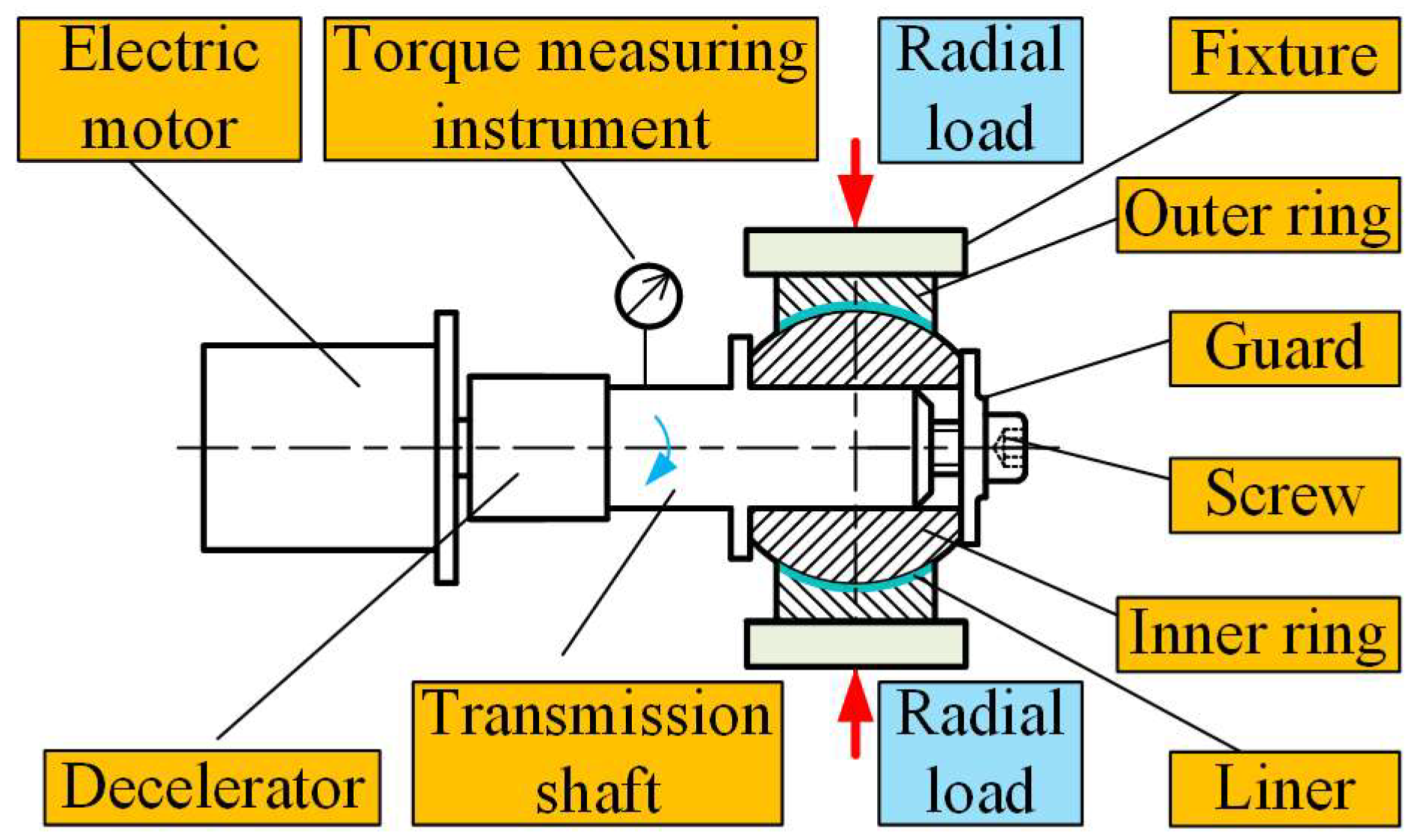


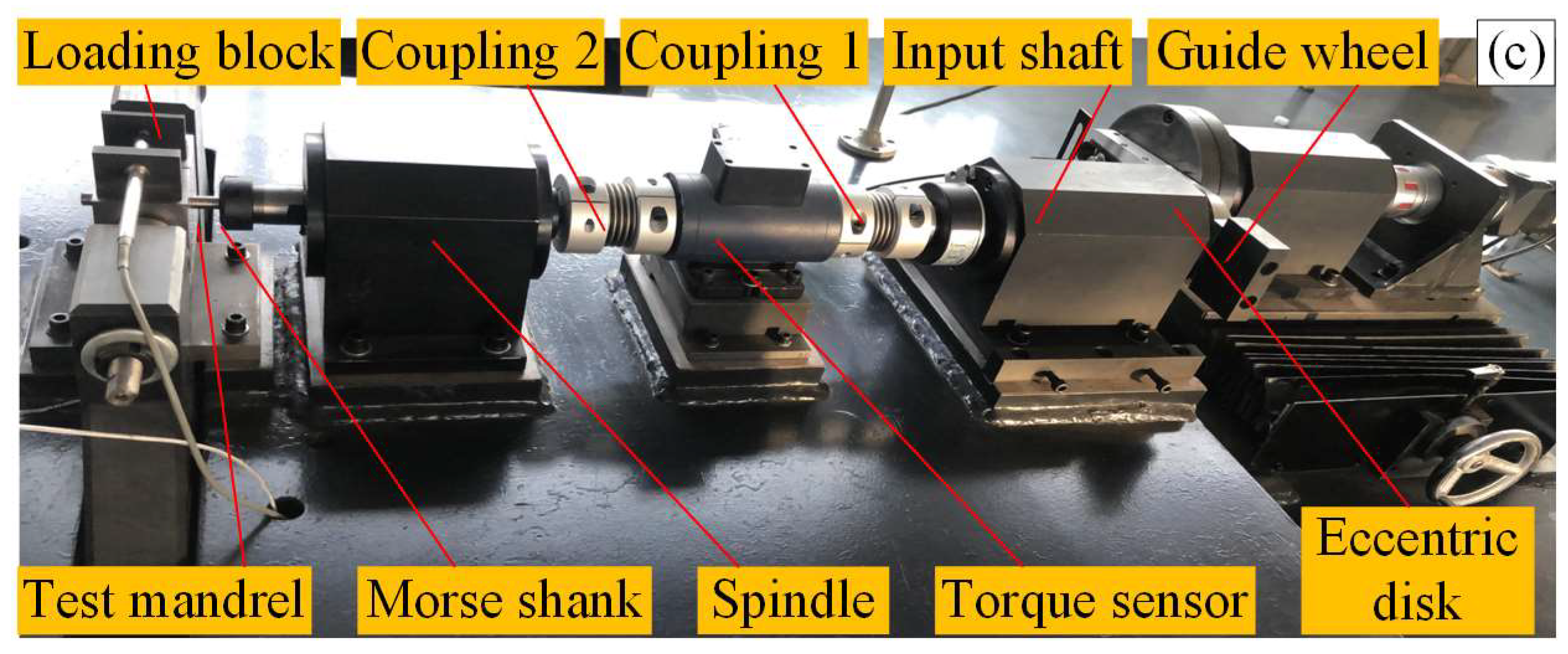

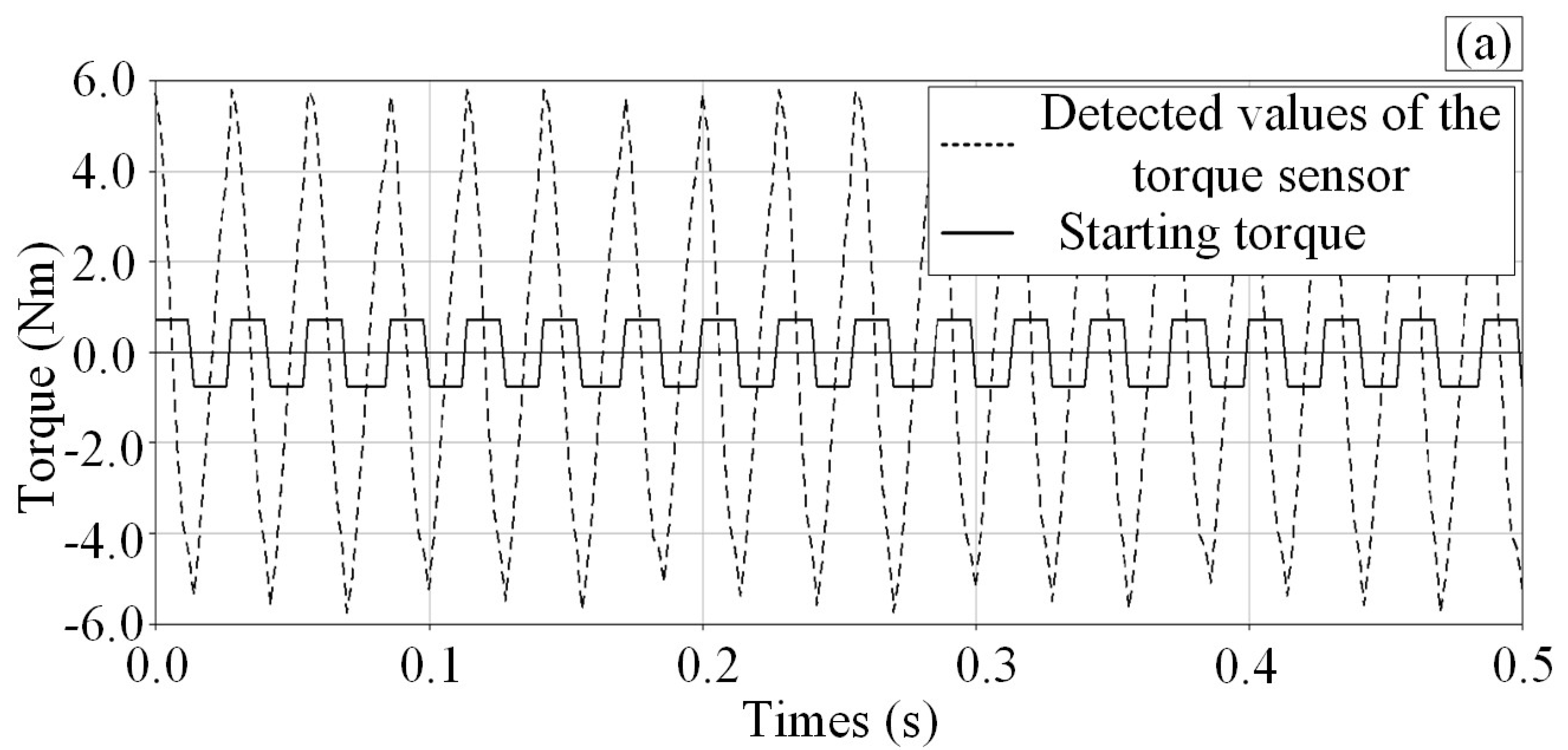
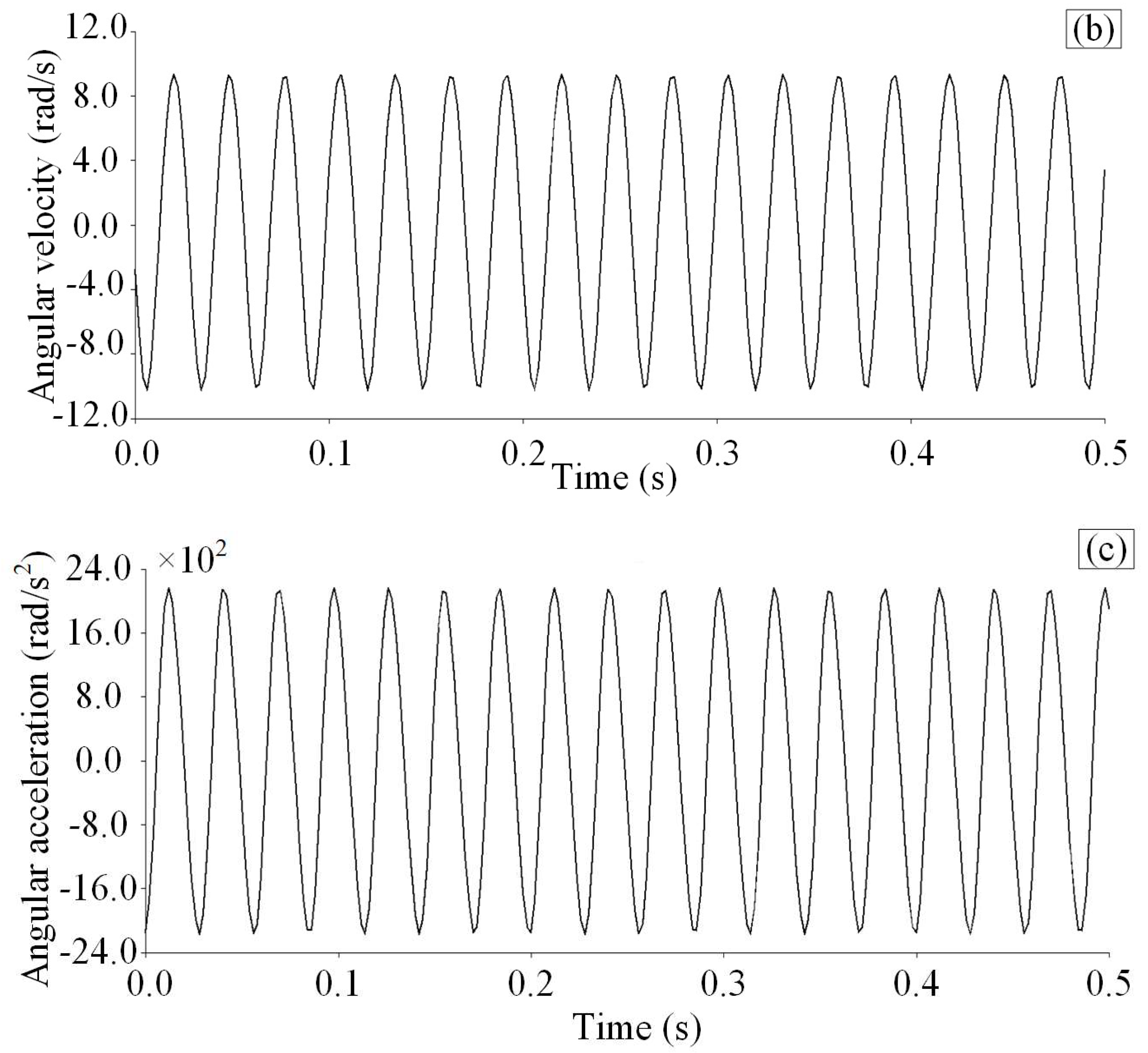
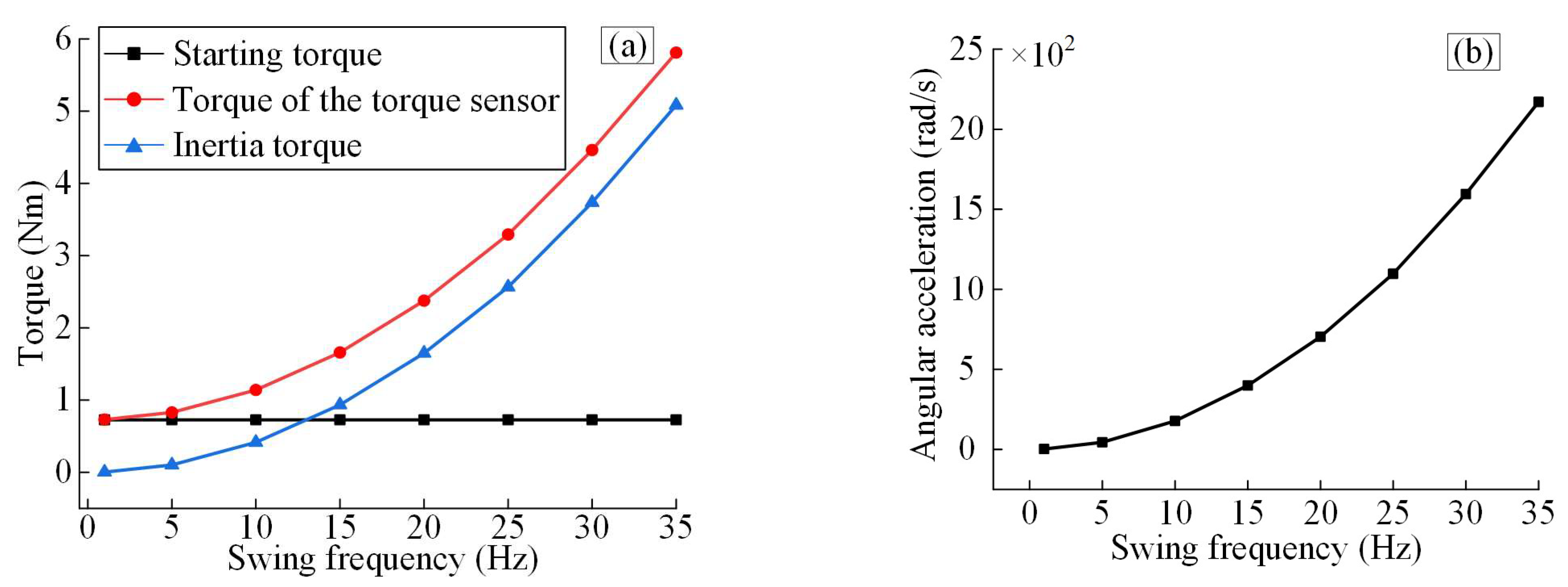
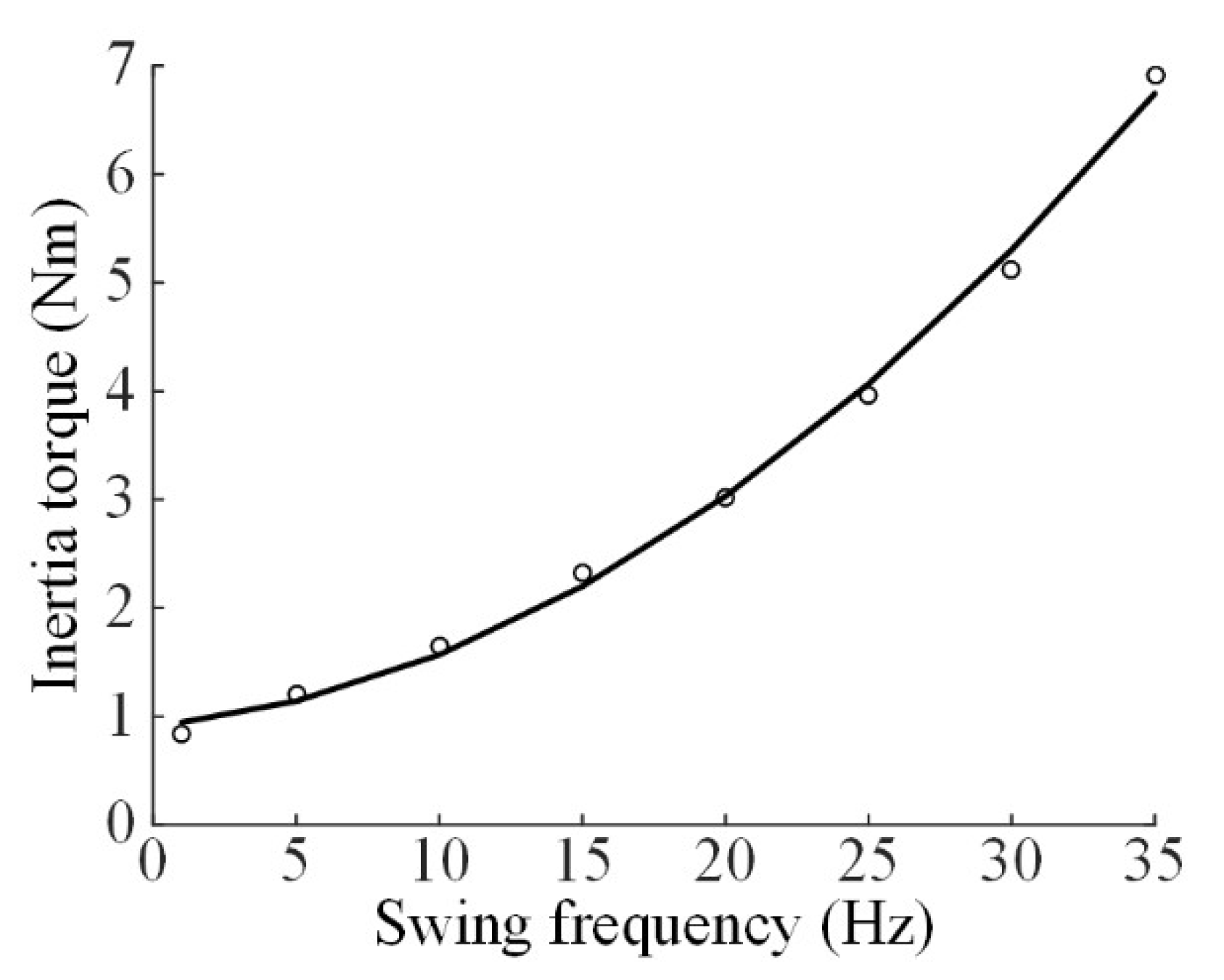
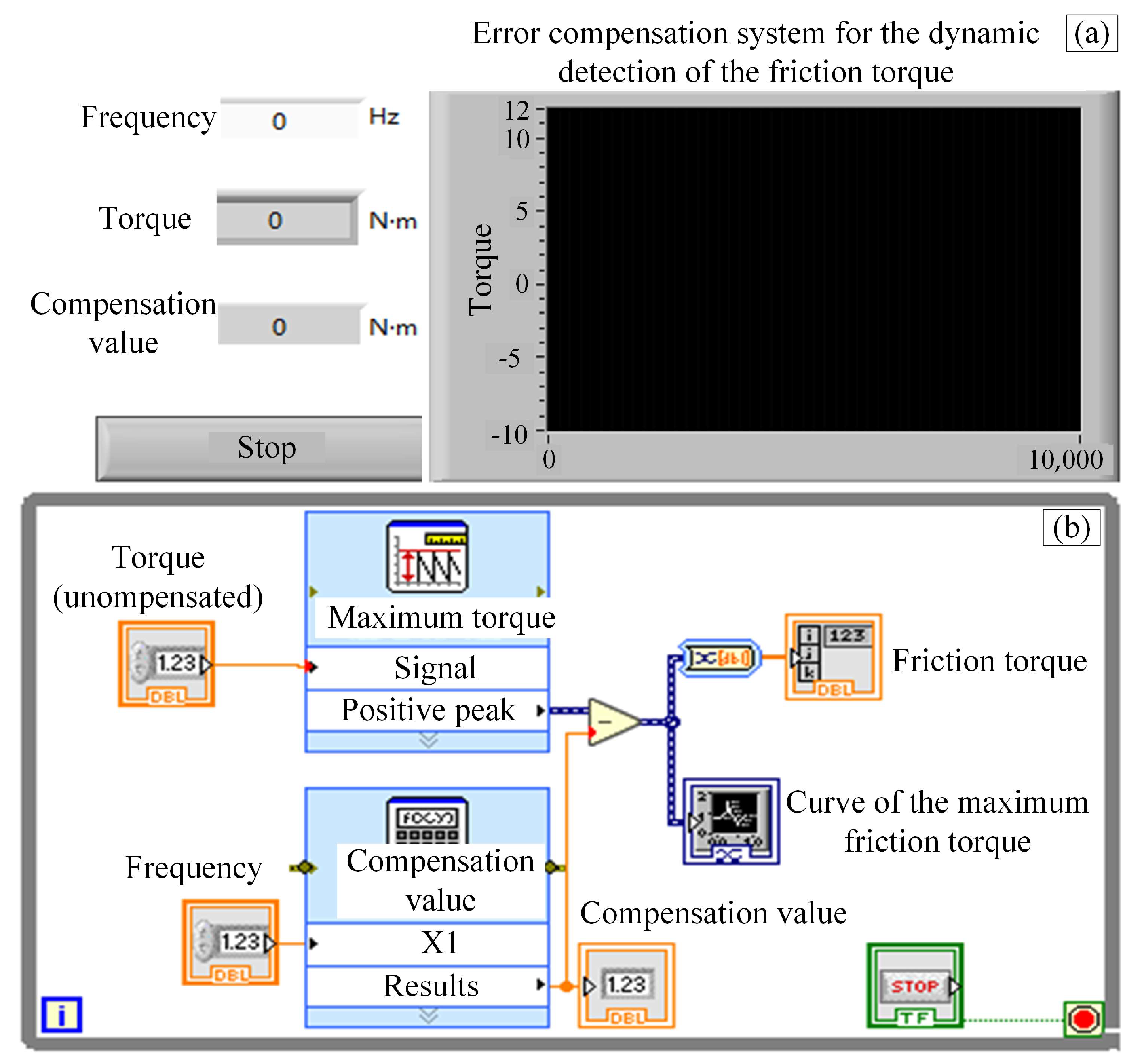

| Swing Frequency (Hz) | Starting Torque (N∙m) |
|---|---|
| 1 | 0.88 |
| 10 | 2.16 |
| 20 | 4.31 |
| Swing Frequency (Hz) | Inertia Torque (N∙m) |
|---|---|
| 1 | 0.83 |
| 5 | 1.21 |
| 10 | 1.64 |
| 15 | 2.32 |
| 20 | 3.01 |
| 25 | 3.96 |
| 30 | 5.12 |
| 35 | 6.91 |
Disclaimer/Publisher’s Note: The statements, opinions and data contained in all publications are solely those of the individual author(s) and contributor(s) and not of MDPI and/or the editor(s). MDPI and/or the editor(s) disclaim responsibility for any injury to people or property resulting from any ideas, methods, instructions or products referred to in the content. |
© 2025 by the authors. Licensee MDPI, Basel, Switzerland. This article is an open access article distributed under the terms and conditions of the Creative Commons Attribution (CC BY) license (https://creativecommons.org/licenses/by/4.0/).
Share and Cite
Wang, Q.; Gu, R.; Xie, R.; Guo, B.; Zhang, Z.; Li, F.; You, L. Research on the Error Compensation for the Dynamic Detection of the Starting Torque of Self-Lubricating Spherical Plain Bearings. Machines 2025, 13, 976. https://doi.org/10.3390/machines13110976
Wang Q, Gu R, Xie R, Guo B, Zhang Z, Li F, You L. Research on the Error Compensation for the Dynamic Detection of the Starting Torque of Self-Lubricating Spherical Plain Bearings. Machines. 2025; 13(11):976. https://doi.org/10.3390/machines13110976
Chicago/Turabian StyleWang, Qiang, Ruijie Gu, Ruijie Xie, Bingjing Guo, Zhuangya Zhang, Fenfang Li, and Long You. 2025. "Research on the Error Compensation for the Dynamic Detection of the Starting Torque of Self-Lubricating Spherical Plain Bearings" Machines 13, no. 11: 976. https://doi.org/10.3390/machines13110976
APA StyleWang, Q., Gu, R., Xie, R., Guo, B., Zhang, Z., Li, F., & You, L. (2025). Research on the Error Compensation for the Dynamic Detection of the Starting Torque of Self-Lubricating Spherical Plain Bearings. Machines, 13(11), 976. https://doi.org/10.3390/machines13110976





